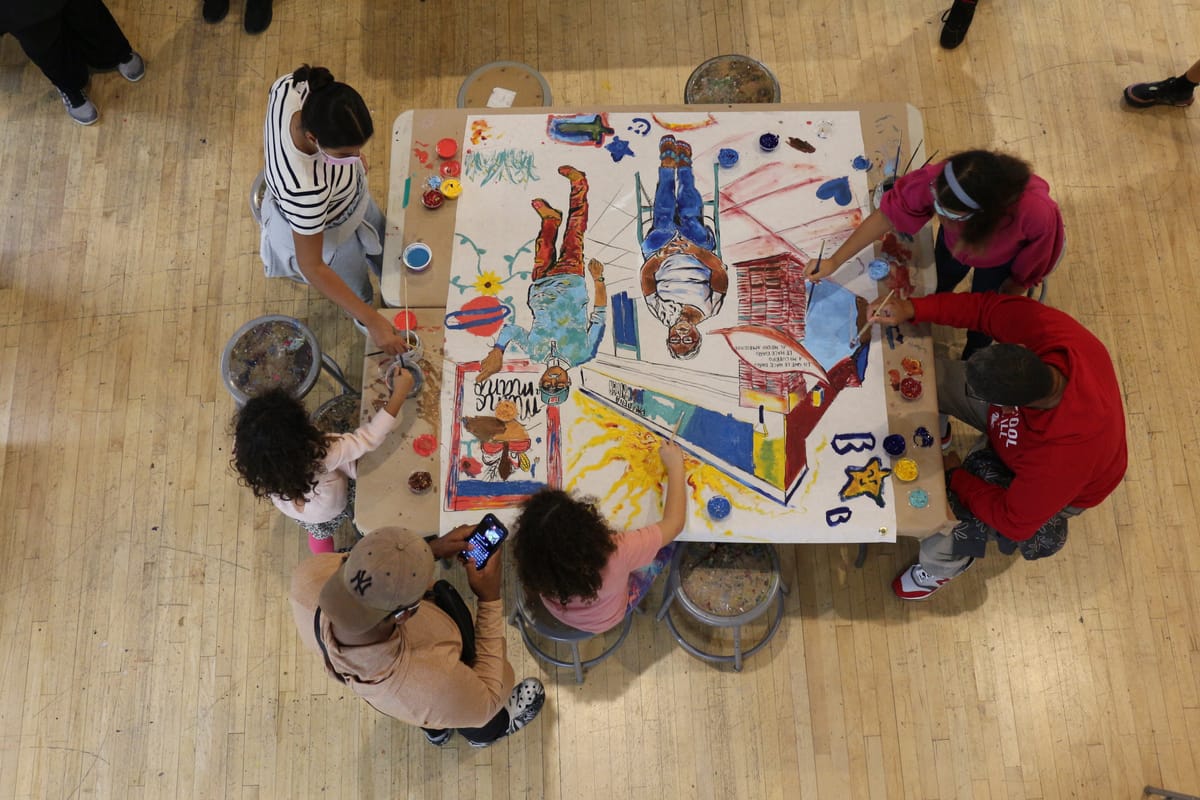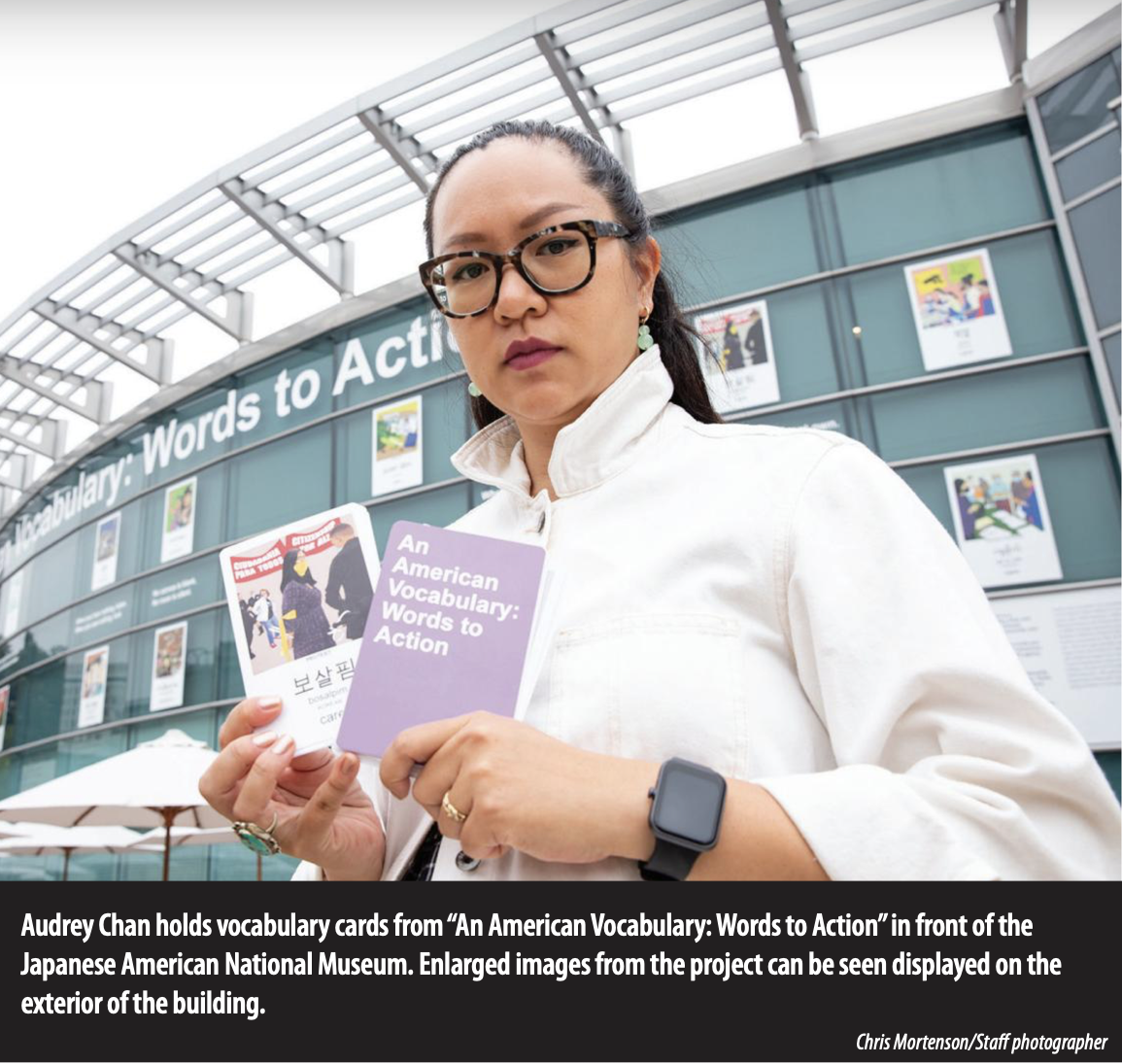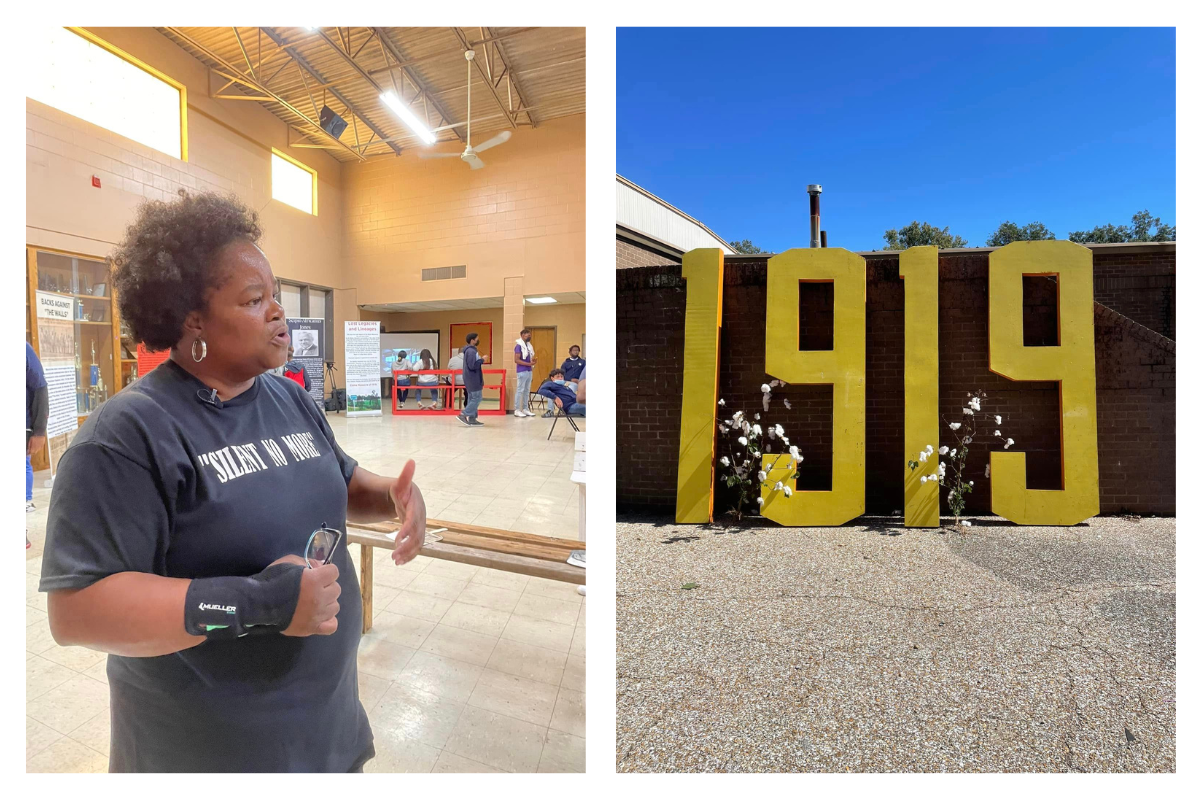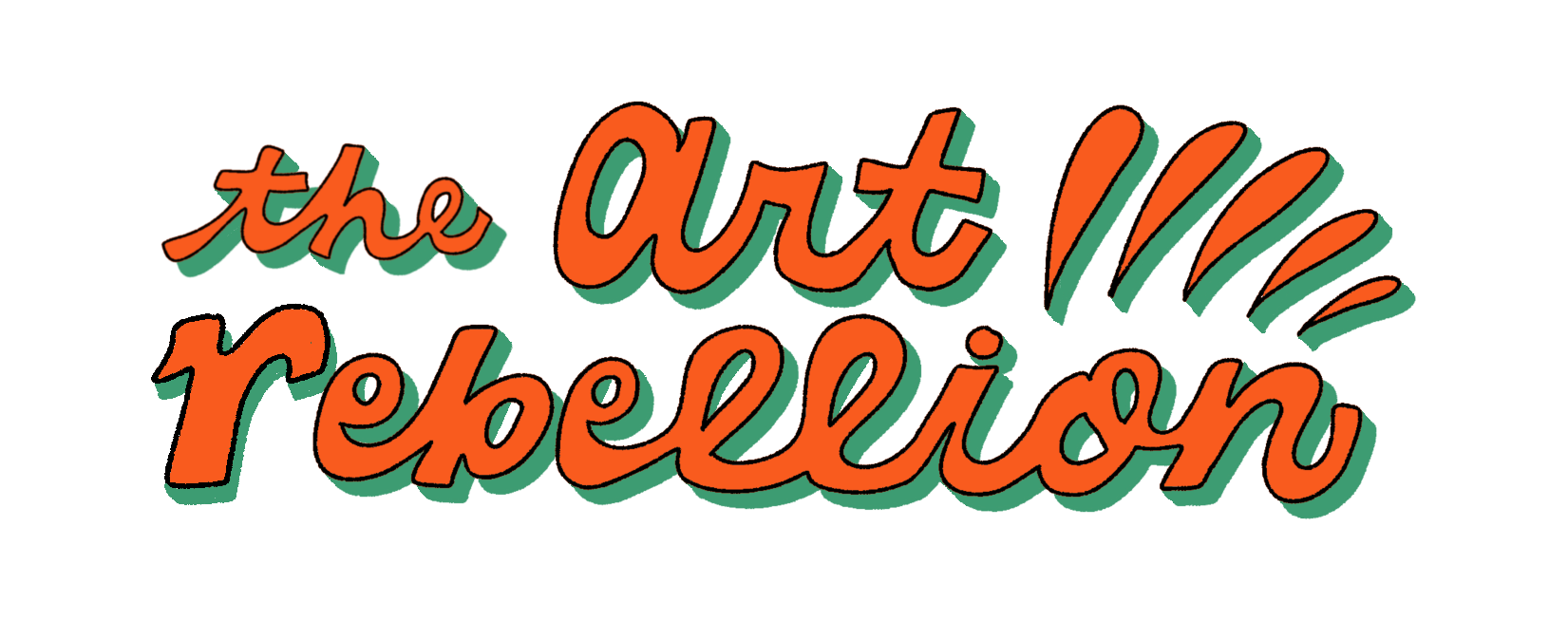A living wage program for artists offering stability and support
Sharing a new article about Artists at Work and a podcast episode I was recently featured in.

What would society look like if artists were valued and paid fairly?
It's a question that's picked up some steam in recent years. The devastation of the pandemic combined with the murder of George Floyd in 2020 sparked a reckoning across the arts ecosystem, with artists demanding pay transparency, equity for artists of color, and a rehaul of how the arts are funded.
One way this reckoning has manifested is in programs that hire artists to support their practice, including Creatives Rebuild New York, a 3-year, $125 million initiative which employed artists for two years to work with a community-based organization, offering a $65,000 salary and benefits. Creatives Rebuild New York also included a no-strings-attached, cash disbursement program for 2,400 artists.
Other guaranteed income programs like Springboard for the Arts' Guaranteed Income for Artists, which offers 75 Minnesota-based artists $500 per month for 18 months, and San Francisco’s Guaranteed Income Pilot for Artists, which dispersed $1,000 per month for 18 months to 130 artists, have provided regular cash payments with no strings attached.
My most recent story is an exploration of Artists at Work, a workforce resilience program that employs artists to work with a social impact organization and focus on their artistic practice for a year.
I hope you'll give the full story a read, but here's an excerpt.
 the art rebellionMakeda Easter
the art rebellionMakeda Easter
Artists at Work, an initiative of the Office performing arts + film, is inspired by the Works Progress Administration, a Depression-era relief program that offered millions of jobs as Americans struggled with widespread poverty and unemployment. Part of the WPA included the Federal Art Project, which employed more than 10,000 artists to create works of art across the U.S.
More than 80 years later, another crisis — the pandemic — instantly decimated the livelihoods of many artists. “We really wanted to do something about it and take what was obviously a devastating moment and turn it into an opportunity for change,” says Nadine Goellner, AAW managing director.
Artists at Work founding director, Rachel Chanoff, raised seed money to launch a pilot program in Western Massachusetts, pairing artists with organizations in the area including Jacob’s Pillow and the Massachusetts Museum of Contemporary Art.
In July 2020, six artists were hired through the pilot which initially included a $15,000 stipend and benefits for six months — “to do two things: one, to keep up their practice as an artist, because we value that and they should be paid for that,” Goellner says. “And also for them to lend their creative skills and artistic vision to the mission of a local, social-impact initiative.”
A $3 million grant from the Mellon Foundation in 2021 allowed Artists at Work to expand the program across the country over a three-year period, increasing the salary to about $32,500, adding benefits, and offering project funds. Additionally, AAW offered participation fees to partner organizations to help build capacity and compensate for staff time dedicated to program-related work.
Artists are hired to work 30 hours a week and spend about a third of their time working with a local partner organization and two-thirds of their time on their own creative practice.
Although artists clock their hours, what counts as “work” is very loose.
“We try to be really nimble and open,” Goellner says. “If you've spent time thinking about your practice today, that is work. That's creative work, and those are hours logged.”
Since its 2020 launch, AAW has offered a salary and benefits to 70 artists and culture workers across 11 states, and received additional funding from regional and community foundations. More than 80% of artists hired through the program are artists of color.
“We’re trying to develop those skills so that artists are set up to see the value of what they do and be able to take that into different arenas after the program ends,” Goellner says.

To determine salaries for the program, AAW referenced MIT’s Living Wage Calculator, a tool that helps employers estimate a full-time wage that covers basic living expenses across the U.S. Under the Mellon Foundation funding, artists made around $32,500, with the exact salary varying by region.
But as the cost of living continues to rise, what counts as a living wage?
According to the MIT Living Wage Calculator, an income that allows someone to live comfortably changes from state to state.
Artists at Work groups its cohorts by region.
15 artists were part of AAW’s Borderlands cohort, which included Arizona, New Mexico, Southern California, and Texas. Other cohorts include the Mississippi Delta region, and Los Angeles County, among others. The organization took a regional approach to setting salaries — the Borderlands cohort received $32,500 and those in Los Angeles County received slightly more because of the state’s labor laws, Goellner says.
“I'll just be very frank, we are in conversation with ourselves about [how] to still maintain equity and hit the standards that we need to be compliant and honor the work of the artists in the right way,” Goellner says. “It’s something that we are wrestling with. In the beginning, when we started in the pandemic, artists weren't working at all.”
Goellner acknowledges that the fellowship isn’t a one-stop-shop when it comes to pay, and says that many artists kept part time jobs to sustain their livelihoods, something echoed by recent alums.
While participating in Artists at Work from 2021 to 2022, LA rapper Jason Chu kept other freelance gigs and also worked on a new album. The biggest benefit of being an AAW artist was a year of stability, “knowing where my benefits are coming from, knowing that I have a base income every month,” he says. “My mental health was great in 2022.”
This March, AAW launched two new artist cohorts in Indianapolis and North Adams, Massachusetts. The program also set a standard salary for all current cohorts — $35,570 with an additional $5,000 in project funds. Over the past year, AAW signed up with a professional employer organization which allows artists to contribute to a 401K.
Goellner sees Artists at Work as part of a larger shift of recognizing the importance of the arts and artists as essential pieces of our democracy and paying them fairly so they can live full lives.
“Creative thinking is not just a hobby,” she says. “It needs to be valued as this essential skill, and this essential part of a healthy society.”
Read the full story here.
Linky links
- I was recently featured on Chicago's WBEZ Rundown podcast. I had such a great time talking to host Erin Allen about this work and the importance of supporting and paying artists a living wage. Hope you'll give it a listen!
 WBEZ ChicagoErin Allen
WBEZ ChicagoErin Allen
- Artists at Work is opening up applications for a new cohort in Springfield, Massachusetts. Here's a link to the application due May 21.
- This piece about the legacy of artist and activist Faith Ringgold 🤍
- While researching the Artists at Work story, I came across this compelling essay from 2021 by Megan Wright about the lack of public funds for the arts in the US and her choice to step away from dance.
Art watch
In April, I spent a day wandering around Expo Chicago, a massive, international art fair. (Thank you Alex for the +1!). Here's a TikTok I made about the price of some of the art for sale.
@theartrebellion How much does the art cost at a major fair like Expo Chicago? Expo brings together 170 exhibitors to showcase and sell art from around the world. The prices arent often listed, but some of the information is available on Artsy. How do you price your art? #artinchicago #buyingandsellingart #chancetherapper #fineart #paytransparency
♬ Sunshine - WIRA
As always, thank you for taking time to read this newsletter.
Please consider sharing the art rebellion with a friend and following this work on Instagram and TikTok.
See y’all next time. 🌞
